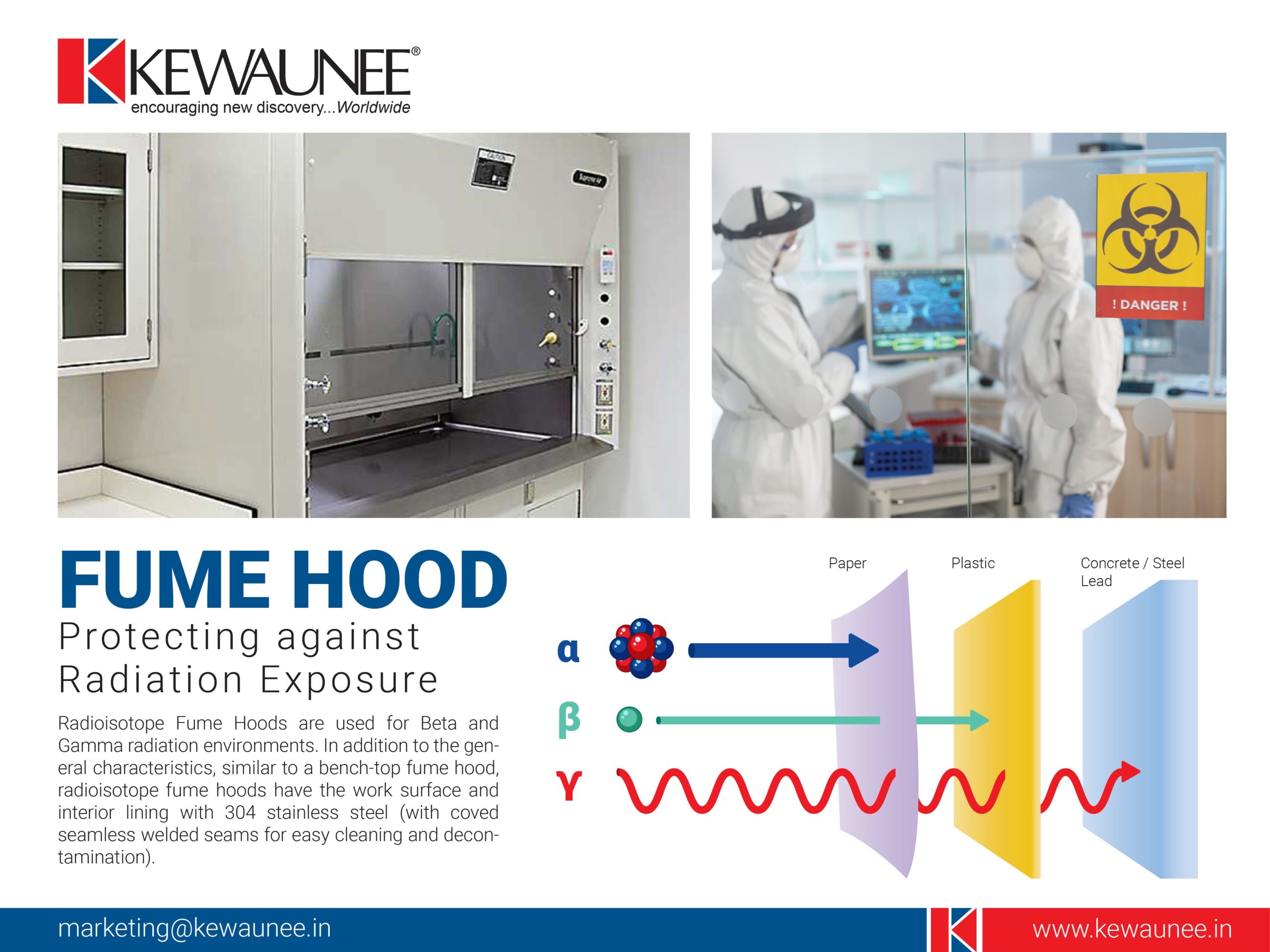Fume Hoods Protecting Against Radiation Exposure
Fume hoods are enclosures designed to protect laboratory workers from hazardous substances that may be released during experimentation. These substances can include gases, vapours, and particulates that can be harmful to inhale or come into contact with skin or eyes. Fume hoods are commonly used in a variety of settings, including chemistry and biology laboratories, pharmaceutical research facilities, and other research and development environments.
Radiation Exposure
One important role of fume hoods is to protect against radiation exposure. There are several types of radiation that can be encountered in the laboratory, including alpha, beta, and gamma radiation:
- Alpha radiation is composed of heavy, positively charged particles that are emitted by certain types of radioactive materials.
- Beta radiation is composed of lighter, negatively charged particles that are also emitted by certain types of radioactive materials.
- Gamma radiation is a type of high-energy electromagnetic radiation that is emitted by certain types of radioactive materials.
Radiation Protection
Fume hoods can provide protection against all three types of radiation. They do this by creating a barrier between the worker and the source of the radiation. There are several factors that can affect the effectiveness of a fume hood in protecting against radiation exposure.
Sash
Fume hoods are equipped with a sash, which is a window that can be adjusted to allow the worker to see into the hood and perform experiments. When the sash is closed, it creates an airtight seal around the perimeter of the hood, effectively blocking the entry of any hazardous substances, including radiation, into the breathing zone of the worker.
Material
Another important factor is the material from which the hood is made. Fume hoods are typically constructed from materials that are resistant to radiation, such as stainless steel or lead. These materials can block or absorb radiation, reducing the amount of radiation that can pass through the hood and reach the worker.
Ventilation
Ventilation systems can affect the effectiveness of a fume hood in protecting against radiation exposure. Fume hoods are equipped with a ventilation system that draws air into the hood and out of the room. This helps to remove any hazardous substances, including radiation, from the working area and prevent them from accumulating in the room. The ventilation system should be designed and maintained to ensure that it is functioning properly and effectively removing hazardous substances from the hood.
Usage
Besides the physical characteristics of the fume hood, how it is used can also affect its effectiveness in protecting against radiation exposure. For example, the sash should be kept closed as much as possible when working with hazardous substances, including radiation. The sash should only be opened when necessary for the conduct of the experiment, and it should be closed immediately after the experiment is completed.
In summary, fume hoods play a crucial role in protecting laboratory workers from radiation exposure. They do this by creating a physical barrier between the worker and the source of the radiation and by removing hazardous substances, including radiation, from the working area via a ventilation system. To ensure the effectiveness of the fume hood in protecting against radiation exposure, it is important to use the hood correctly and to maintain it properly.
Comments are closed.











